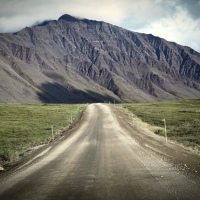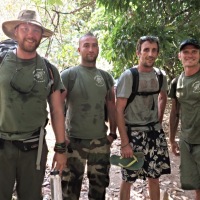Life’s a Beach, with a few owls and some fly burgers

The project to kayak along some of the lake shore of Mozambique has sadly been put on hold – due to the kayaks not arriving from South Africa. We’re closing in on mango season; the unpredictable storms and heavy rains wouldn’t help our efforts. Attempting the expedition for three weeks on canoes made by digging out the inside of an entire tree trunk – which the fishermen use – is a bad idea. From experience, manoeuvring our trunk-boats in the heavy storms would not only be back-brakingly difficult on the stormy sea, but it would likely end in our equipment getting drenched. Bjorn and I have made plans to explore the territory another time.

In a wonderful twist of events, instead of kayaking down the wild, lake-coastline of Mozambique, we’ve had our arms twisted into visiting Likoma Island. Likoma is the larger of the two Malawian Islands which are located nearer to Mozambique. Surrounded by lake waters they are, or were, oases of missionary action.

Following word from David Livingstone in 1880, Christian missionaries set up their headquarters on Likoma, which apparently is the reason it belongs to Malawi and not Mozambique. Likoma still flaunts its missionary-influenced backdrop with schools, basic infrastructure, a much more gentrified approach to local interaction compared to say, Chizamulu, and a rather large and unnaturally-placed, stone built (mini) cathedral. St Peter’s is a bastion of the anglican faith and for many tourists and followers of god, a must-see attraction on a trip to Malawi. I also hear that there is a pair of resident barn owls living in its steeple, but I still didn’t visit.

In the centre of Likoma are rolling hills and grass lands and the entire island is dotted with knarled but impressive baobab trees. Like giant watchmen over sacred land, they stand solid and proud to anyone that lays eyes on them. It’s almost a fairytale landscape as we wander around them in the sweat-spawning heat, but then there’s the influence of the church, which has brought the wild of Licoma to it’s modern disposition. The human population is over 9000 with a mix of Malawian ethnic groups and their economy revolves mainly around fishing, as well as localised cassava farming.

Our week on the island was spent solely on the beach. Our friend, Andrew, is currently building his second tourism venture on Likoma – a peaceful treehouse retreat set into a small forest of fruit and palm trees. At the moment, all that is here is the gorgeous beach and a huge, ancient fig tree. Andrew is living under the tree while things are constructed and his trees grow around him. Naturally, being so remote, it’s a slow process, especially when you have to wait for trees to grow and supplies to be shipped in. However with a large number of labouring locals eager to earn money and eventually work full time in the new retreat, the beach and its new attraction is taking shape relatively speedily.


We while away the time sleeping under mosquito nets on the sand, and discussing the ways of the world during the day. No electric, no phone signal, no irrigation, no water taps and no nearby toilet. It’s beach living while the slow but definite development occurs around us. The tree house designs are in Andrews head (as far as I know) but these are exiting times! Further down the beach and round the coastline is Andrew’s first venture (which he sold) – the Malawian 5-star resort of Kaya Mawa. We took a walk through the resort and saw the usual failings of a poorly managed, overpriced, souless-haunt, and honestly, I would rather be on the beach.



There is a completely different vibe on Likoma than there is on Chizamulu. I’m putting it down to the history of the missionary “invasion” (even though their presence enforced the end of slavery). With a larger landscape and the development of tourism alongside a welcoming community, Likoma is a peaceful oasis compared to Chizamulu. It continues to pull intrepid travellers from both the wealthy end and the shoestring end of the tourism spectrum. The locals appear much more friendly and gentrified, and the huge and vibrant schools on the island are testimony to it’s focus on the future. It’s also the first place on Lake Malawi where I have seen any local using a boat with a sail and to me, to not see them all over the lake seems insane!

We hire a local guy and his boat to sail us back to Chizamulu. With stitched together potato sacks and a few tree boughs loosely hooked onto a mast, the sails billow and flap (at least for the first half of the sail) as we make it back to Chizamulu in a few hours. It’s fair to say we wouldn’t have made it the entire way without our stick-paddles. We twice came close to grounding on some (small)-croc-friendly waters due to the regular drop in the afternoon wind. At least out on the lake we always had fresh water. With tough stomachs we never went thirsty, but it was finally good to see Nick again who was waiting with a few beers and some freshly speared fish for dinner.

Thankfully, lake flies don’t bite like Mosquitos do. However when they are blown off the lake in their droves, I wouldn’t fancy my chances to breath amongst them. Often mistaken for smoke on the water (but without the epic guitar riffs), they swarm across the lake as if there is a fire on the horizon. People have even made their way out onto the lake after assuming the flies are a burning boat. Living and dying above the water, the flies do reach land. It’s overwhelming for the shore dwellers. So much so that they regularly taste the sweet flavour of revenge…literally. Malawians (and I assume some Mozambicans) catch the swarms, kill them, construct them into meat patties and fry them as a protein burger. Tasting slightly fishy (described brilliantly last night as “fried fish sandwich paste”) and having a similar texture to oily treacle, they’re actually a highly nutritious alternative to whatever protein is lacking in local diet. I’m also a fan of bug eating and no one could convince me otherwise that these fly burgers (or any other bug or amphibian) aren’t the answer to the world’s current nutritional problems.

It’s been an epic time to relax with friends on the Malawian Islands of Likoma and Chizumulu. In the next few days the Ilala will take us back to the mainland. One thing that has become very clear from my time on the beach is that my adventures in Africa, are only just beginning…





Winston, great to hear from you. Your chestnut tree ( Winston) is still alive on Round Island, Clayton, NY. Love your blogs.
LikeLiked by 1 person
Such great news, Dick!
Great to hear from you.
I do hope life is treating you well.
Keep me posted about the tree. You’re very welcome to visit me in Malawi.
LikeLike